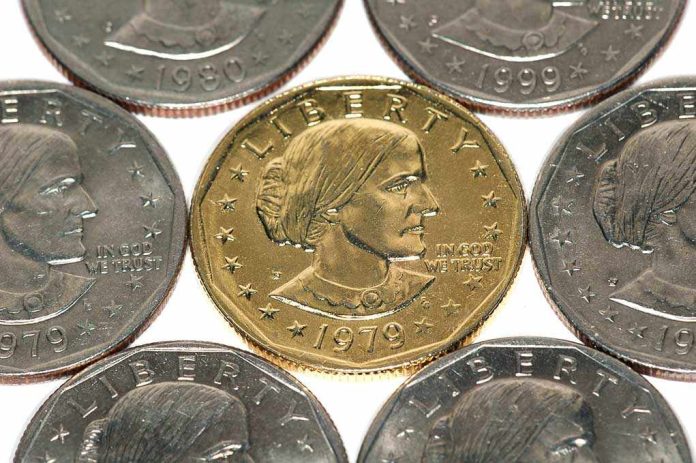
America’s longest-running coin is vanishing, and the ripple effects will force every cash register, bank, and wallet in the country to adapt—whether you ever used pennies or not, your change is about to change forever.
Story Snapshot
- The U.S. Treasury will halt penny production after more than 230 years, marking the end of an era for American currency.
- Pennies cost nearly four times their value to produce, driving the move to save taxpayer dollars and modernize currency.
- Cash transactions will round to the nearest nickel as pennies disappear from circulation, but existing coins remain legal tender.
- This is the first time in U.S. history the penny will not be minted, putting America in line with countries like Canada and Australia that have already phased out their lowest coins.
The Last Penny: A Historic Halt with Economic Roots
After over two centuries, the U.S. penny is finally bowing out. The Treasury’s decision, formalized in May 2025, is rooted in cold, hard economics: each penny cost 3.69 cents to produce, draining $85 million annually from taxpayers. Despite repeated bills in Congress, it took an executive directive from President Trump to bring the curtain down. By early 2026, the familiar copper coin will no longer march off the mint’s presses, its long run ending not with drama but with spreadsheet logic.
For many, the penny’s disappearance symbolizes more than budget math. Authorized by the Coinage Act of 1792 and minted since 1793, the penny has outlasted wars, depressions, and redesigns. Yet inflation and digital payments have shrunk its real-world value to near irrelevance. Canada and Australia faced the same reality and retired their smallest coins years ago. America held out, largely for tradition’s sake, but the numbers finally overwhelmed nostalgia.
How the Phase-Out Unfolds: A Timeline of Disappearance
February 2025 set the process in motion: President Trump instructed the Treasury to halt penny production, and by May, the Mint placed its last order for penny blanks. The formal announcement came on May 22, triggering a logistical ballet. Banks and retailers immediately began phasing out penny shipments, preparing for the new reality of rounding transactions to the nearest nickel. By November, the last pennies rolled off the presses. The Common Cents Act appeared in Congress, offering a legislative bow to the decision, but the operational gears were already turning.
Consumers won’t see an overnight change. Pennies remain legal tender, and no recall is planned. Instead, as banks and stores gradually exhaust their existing stock, change will be rounded up or down in cash transactions. Electronic payments, ever precise, will still process to the cent, but for those dealing in cash, the era of exact change—at least to the penny—is over. The slow fade echoes other countries’ experiences, with minimal disruption and a surprising degree of public indifference.
Winners, Losers, and the Psychology of Small Change
The penny’s demise triggers a cascade of consequences. For the Treasury and taxpayers, the result is clear: tens of millions saved annually. For retailers and banks, the transition means updating registers, retraining staff, and communicating new policies to customers. Cash-reliant consumers—often the elderly or low-income—face the greatest immediate adjustment, but international precedent suggests rounding is usually neutral over time. Coin collectors, meanwhile, anticipate a boom in interest, as each remaining penny becomes a relic of a bygone era.
Emotion runs deeper than logic for some Americans. The penny, after all, carries Abraham Lincoln’s image and memories of childhood piggy banks. Critics worry about the impact of rounding on the poor, but studies from Canada and Australia show negligible effects. Retail industry groups grumble over logistics, but acknowledge the momentum of modernization. Congress remains split: some see tradition at stake, others celebrate a long-overdue cut in government waste.
What Remains and What Comes Next
The penny’s exit raises a provocative question: how long before the nickel, itself minted at a loss, faces the same fate? For now, the focus is on a smooth transition. Banks and retailers refine their processes, government agencies tout efficiency, and the public gradually loses a minor but persistent piece of Americana. The last pennies will circulate for years, but their days as a practical coin are numbered. The world moves on, as it always does—one less cent at a time.
As the era of the penny closes, Americans are left to consider what’s truly valuable: tradition, efficiency, or simply the convenience of never having to fish for that elusive coin at the bottom of the jar again. The penny’s passing, quiet but consequential, marks a new chapter in the story of American money—one that values sense over cents.
Sources:
Bangor Savings Bank – Penny Phase-Out
Wikipedia – Penny Debate in the United States
Fox Business – US Mints Its Last Penny
Politico – US Mint to Strike Last Penny



